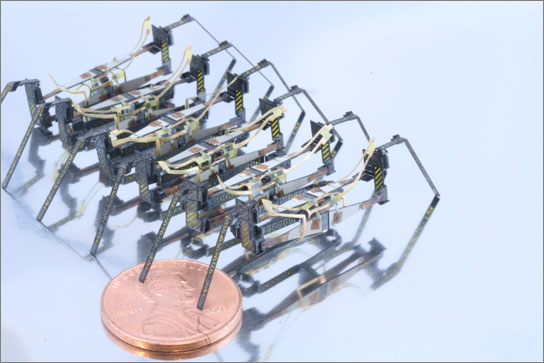A stunning photo of a centipede millirobot by Wyss core faculty member Rob Wood and graduate student Katie Hoffman received an honorable mention in the 2010 AAAS International Science and Engineering Visualization Challenge.

The annual Visualization Challenge was created by the journal Science and the U.S. National Science Foundation to engage people from around the globe in conveying science in novel and visually stimulating ways. The competition builds on the premise that illustrations provide the most immediate and influential connection between scientists and other citizens and represent the best hope for nurturing popular interest.
“The entries were exceptional and they communicated science in a way that the public can understand and appreciate,” said Monica M. Bradford, executive editor of Science. “The international competition highlights the innovation and technical expertise of scientists who are able to visually attract a wide audience and engage them to experience the complex nature and beauty of science.”
Hoffman and Wood’s photo is of a 12-legged, segmented robot based on the body morphology of a centipede. From the top view, one sees the actuators that control each leg, while the reflection shows the flexible connections between the segments, and the penny establishes the robot’s size.
Hoffman points out that most robots of this size mimic the morphology of cockroaches, which have only six legs and much more rigid bodies. By using a centipede for a model, she hopes to study the way flexibility and body undulations enhance locomotion. Watch a video of the robot in motion…
The centipede millirobot is just one project in Wood’s lab that looks to insects for inspiration. Wood is also leading a team of over 40 researchers on project to develop coordinated colonies of autonomous robotic bees that might one day perform important tasks, such as search and rescue, hazardous environmental explorations, and pollination.
Winners in the Visualization Challenge’s five categories (Photography, Illustrations, Informational Posters and Graphics, Interactives Games, and Non-Interactive Media) appear in a special section in Science and Science Online, and on the NSF website.